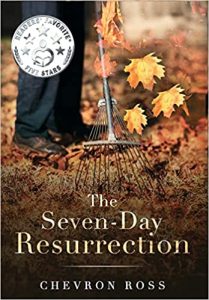Historians date the start of America’s Civil War with a rebel attack on Fort Sumter in April 1861. What Erik Larson adds is the suspenseful and dramatic series of events leading to the attack.
 In vivid detail, Larson describes a South emboldened by its self-righteous defense of slavery, and a North caught in transition between one president and another. The circumstances are remarkably like those following the 2020 Presidential election. Among them:
In vivid detail, Larson describes a South emboldened by its self-righteous defense of slavery, and a North caught in transition between one president and another. The circumstances are remarkably like those following the 2020 Presidential election. Among them:
- Fears that pro-slavery forces would disrupt the certification of electors.
- Abraham Lincoln’s foes spread conspiracy theories that his election would embolden Southern slaves to arise and kill their owners.
- The man authorized to count and certify the electoral votes was Lincoln’s primary opponent in the election.
- On certification day, crowds of angry Southerners swarmed the Capitol, “firing off obscenities like grapeshot.”
The hub of the Southern rebellion was South Carolina, whose harbor contained Fort Sumter and other federal outposts. In December of 1860, following Lincoln’s victory, the state’s leading political figures gathered in Charleston to declare their secession from the Union.
The outgoing president, James Buchanan, ruled that if a state wanted to secede, the federal government could do nothing about it. Lincoln, who could not take power until his inauguration on March 4, had to bide his time while other Southern states joined the parade.
Larson recounts the dilemma of Captain Robert Anderson, Fort Sumter’s commander, whose seventy-five starving men burned buildings and gun carriages to keep warm while two thousand South Carolina troops occupied nearby forts, mounted cannons, and stockpiled ammunition in preparation for an attack. Fearful of sparking a war, the federal government delayed a supply mission until it was too late.
As he does in all his histories, Larson provides a sense of the times by quoting from diaries, letters, memoirs, and other documents. Mary Chestnut, wife of a Confederate colonel, lived on a huge plantation with a lumber mill, grist mill, stables, forges, cotton gin, ice house, and quarters for hundreds of Black slaves. William Russell, an English journalist, described his astonishment at seeing spittoons and tobacco stains wherever he went. A visiting German reporter recalled Lincoln’s disarming humor when the two men took shelter from a rainstorm in a railroad car. There, Lincoln talked about his career and laughed, “Just think of such a sucker as me as President!” Larson even lists the household furniture Lincoln sold to pay for his inauguration trip to Washington.
There is so much to enjoy and lament in this book. One can understand the buildup to war while recognizing the futility of it. The Civil War killed 750,000 Americans. Yet today, partisan anger divides us again. Erik Larson’s history is a five-star reminder that if it happened once, it could happen again.
Featured by Chevron Ross
Follow these links for more about the Chevron Ross novels
Weapons of Remorse The Seven-Day Resurrection The Samaritan’s Patient




